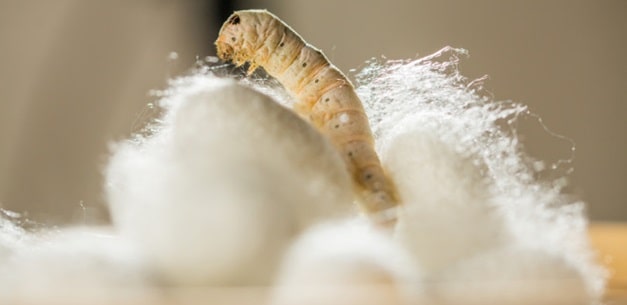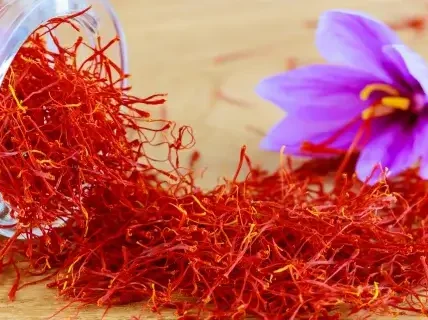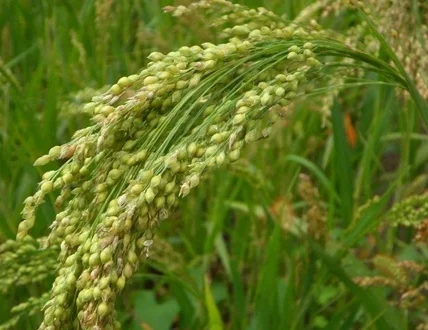You know, way, way back, like thousands of years ago, people figured out this crazy idea of turning caterpillar threads into clothes. And fast forward to now, in 2025, we’re talking about humans producing not just a few, but hundreds and thousands of metric tons of silk every single year. Makes you wonder, right? How did we even get here? Well, let me tell you, it’s pretty straightforward. We’ve been busy bees, domesticating all sorts of silkworm species for, like, ages now. And here’s a fun fact that might just blow your mind, one tiny silkworm, yeah, the Mulberry kind, can spin a silk filament that’s over a kilometer long. And yes, to get just 1 kilogram of that top-notch, high-quality silk, you’re gonna need more than 5000 of these little silk-spinning champs. Now, that’s massive, right? Really puts into perspective how ginormous the silk production game is these days. And if that has got you thinking about where all that silk comes from, like country-wise, then keep on reading today’s post. That’s because here we will be going on a little detour to check out the top 10 largest producers of silk in the world as of 2025. Alright, here we go.
1. China
Now, let’s talk about China first, alright? Sitting at the very top with a whopping 46,700 metric tonnes of silk produced every year, China isn’t just leading; it’s absolutely dominating the silk game. And yeah, this isn’t just about numbers. It’s about a rich history, a culture deeply intertwined with silk. You see, silk production in China goes way back, thousands of years back. It’s not just a part of their history; it’s in their veins. From the traditional silk farming, known as sericulture, to the art of weaving, it’s all been handed down through generations. And let me tell you, the silk you see from China? It’s not just fabric, nah man, it’s a legacy of ancient craftsmanship meeting modern innovation.
2. India
Right behind China, there’s India, with an impressive tally of 34,904 metric tonnes of silk each year. But here’s the catch though: India’s silk story is all about diversity. We’re talking about different types of silk here like the famous Mulberry, Eri, Tasar, and Muga, each with its own unique vibe. And it’s not just silk; it’s a piece of Indian culture, woven into every thread. Sericulture is more than just business in India, it’s a lifeline for many in rural areas you know? And the silk? Oh, it’s a feast for the eyes with vibrant colors and intricate designs that make it a hot favorite globally.
3. Uzbekistan
Now, Uzbekistan might seem like it’s just playing in the minor leagues with 2,037 metric tonnes, but don’t be fooled though. Uzbekistan’s silk scene is as rich as it gets. Picture this: a country where silk production is a living memory of the legendary Silk Route. Their silk is bold, it’s unique, especially the Ikat fabrics. It’s not just about producing silk, it’s about preserving a heritage, a mix of historical wonders and local artistic flair.
4. Vietnam
Now, when you talk about the big players in silk production, you just can’t skip over Vietnam, right? With a whopping annual production of 1,067 metric tonnes, Vietnam is quickly becoming the talk of the town in the silk industry. It’s not just about the quantity though, the quality and craftsmanship are what really set Vietnam’s silk apart. Take a stroll through the famed Van Phuc Silk Village, and you’ll get what we mean, it’s like stepping into a centuries-old tradition of silk weaving that’s still going strong. Vietnamese silk, well, it’s all about that fine texture and durability that fashion folks can’t seem to get enough of.
5. Thailand
Alright, next up, we have Thailand, churning out a solid 503 metric tonnes of silk every year. But it’s not just the numbers that are impressive, it’s the silk itself, it’s downright exquisite. The heart of it all? Isaan, in the northeastern part of Thailand. This is where the magic happens. Thai silk is something else, we tell you, luxurious texture, colors that pop, all thanks to those unique dyeing techniques they’ve got going on there. But here’s the thing though, Thai silk isn’t just a product; it’s a whole lifestyle, deeply woven into the local communities. And the world? Oh, they just can’t get enough of it, you know?
6. Brazil
And then, there’s Brazil. Bet you didn’t see that one coming, did you? With an annual production of 373 metric tonnes, Brazil is leading the silk game in South America. It’s a bit of a surprise, considering the region’s pretty new to the whole silk scene. But here’s how they did it, they embraced the latest tech and really upped their farming game, and boom, their silk quality and production just skyrocketed. Brazil’s all about that finer silk thread, making a name for itself in the global silk market.
7. North Korea
Now, talking about North Korea, it’s like stepping into a bit of a mystery when it comes to silk production, right? They churn out 370 metric tonnes of the stuff each year. Most of it’s under tight state control, with places like the Kim Jong Suk Silk Mill in Pyongyang being major players. Despite all the economic sanctions and not mingling much globally, North Korea’s silk game is surprisingly steady. They’ve got this whole self-reliance vibe going on, which has brewed up a pretty unique silk industry, kind of cut off from the rest of the world but still fascinating in its own right because of its resilience and the top-notch quality of silk they produce.
8. Iran
Now let’s swing by Iran. We’re talking about an annual whopping 272 metric tonnes of silk production here. Silk in Iran? It’s been around for more than 3,000 years, deeply woven into the fabric of their history, especially with the historic Silk Road running right through it. This isn’t just any silk; we’re talking high-quality stuff often used in those luxurious Persian rugs and fancy textiles. Iranian silk is this incredible mix of time-honored traditions and snazzy modern techniques, making it a standout in keeping cultural heritage alive and kicking.
9. Bangladesh
Moving on to Bangladesh, with 41 metric tonnes of silk a year, they’re the new ones in this whole silk scene. The silk biz here is mostly in the countryside though. It’s all about small-scale operations and sticking to traditional weaving methods. What’s cool about Bangladeshi silk is its focus on being sustainable and community-driven. It’s like Bangladesh is holding onto its roots while also playing the modern game, making their silk not just unique but a true reflection of their dedication to cultural heritage.
10. Japan
Finally, let’s talk about Japan. Sure, they’re only producing about 10 metric tonnes annually, which might seem a small player in the grand scheme of things. But let me tell you, Japanese silk is all about quality over quantity. It’s deeply entwined with their cultural legacy, think silk fabrics for kimonos and such. These silk producers are all about precision and skill, ensuring that even though they’re not churning out loads, the silk they do make is nothing short of extraordinary.
Conclusion
That’s pretty much it for today. So yeah, now you know where all that silk is coming from, right? Keep in mind though, silk production is something that is slowly and steadily increasing, that’s because more silk is only cultivated when there is a high demand for it.

Brandon is the cheif editor and writer at WorldUnfolds.com. With a passion for storytelling and a keen editorial eye, he crafts engaging content that captivates and enlightens readers worldwide.















